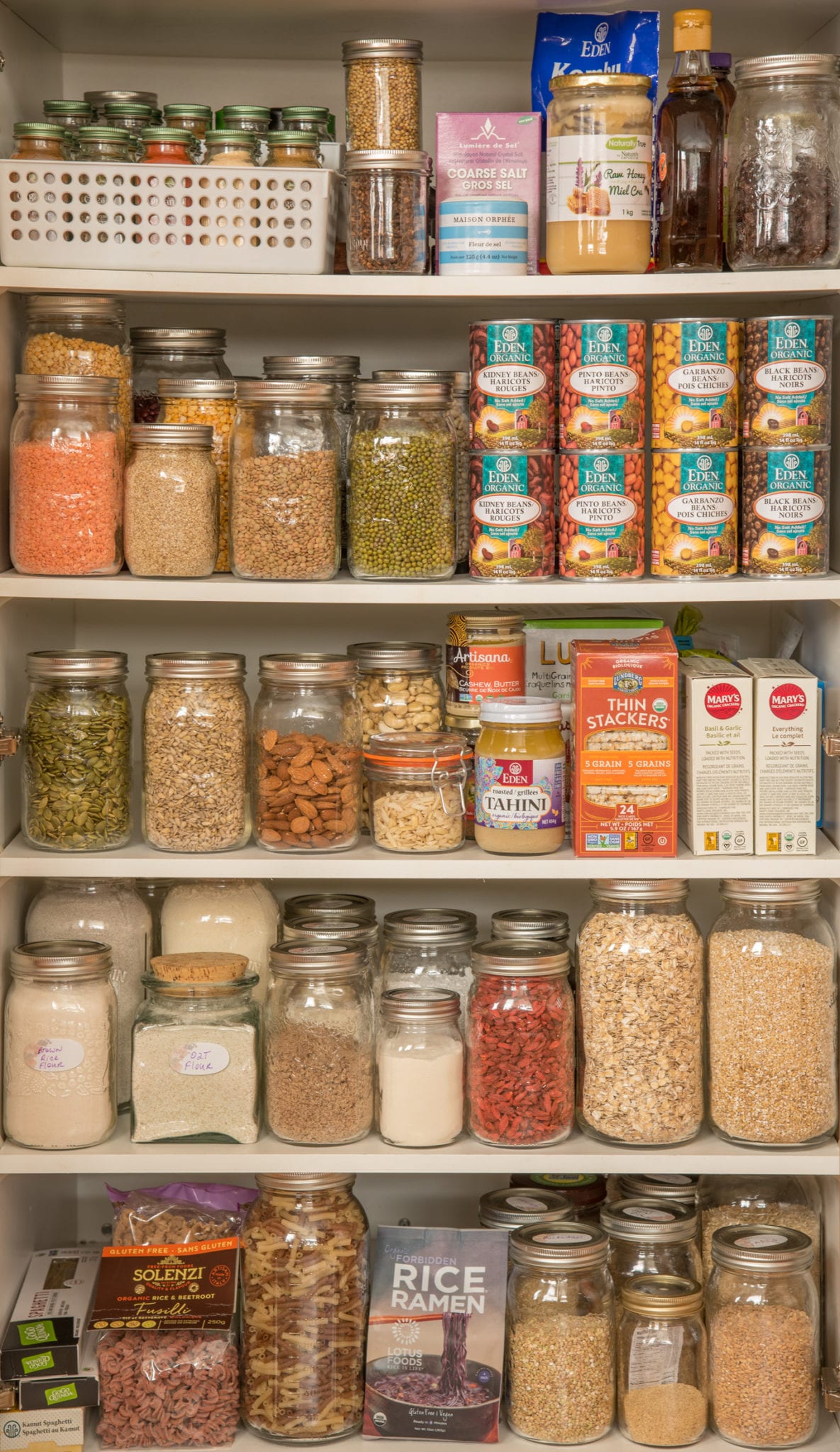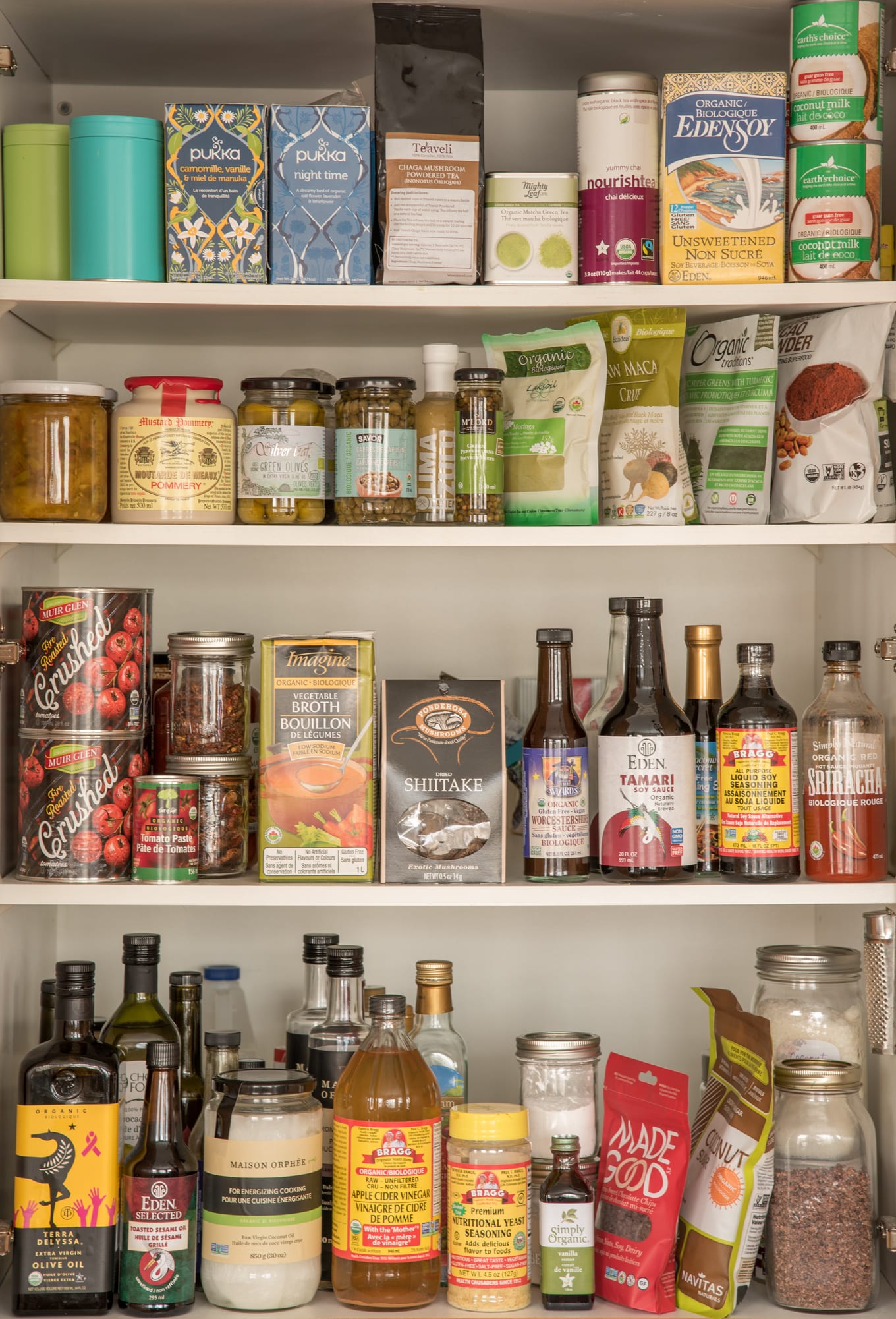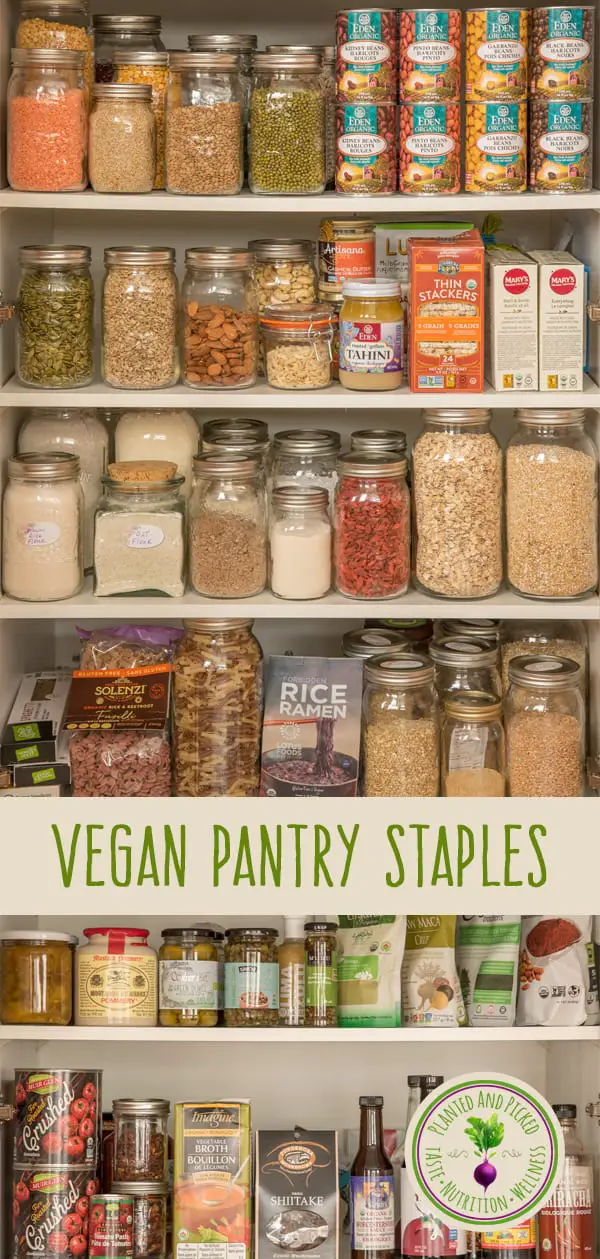
Stocking a Plant Based Pantry
Welcome to our pantry and all of the plant-based pantry staples within! When you start eating more plant-based foods and cooking more whole food plant-based recipes, you inevitably start to see ingredients that you may not have heard of or used before, such as tamari, coconut aminos, raw cacao powder and apple cider vinegar. When I first started progressing towards a plant-based diet, it took a while to stock my pantry and I started by slowly replacing ingredients with upgraded ingredients like tamari and Bragg’s liquid aminos instead of soy sauce (with ingredients such as genetically modified soy, sodium benzoate and caramel colour).
Quality Ingredients . . .
When shifting to this lifestyle, it is also important to start looking at the quality of the ingredients that you are using and, as much as possible, move towards organic, GMO-free and free of preservatives and chemicals. The cleaner your diet, the better you will feel and, hopefully, the healthier you will be.
The Plant Based Pantry Staples Behind our Cupboard Doors
After a number of years of cooking with more whole foods, our pantry is bursting at the seams because we have gradually accumulated many, many ingredients and we do a lot of cooking at home. We dream of having a huge pantry with pull-out shelves and an open wall shelf where we can line our mason jars. Instead, we find ourselves often on hands and knees digging into the back of the cupboard . . . luckily, we know exactly where everything is. Don’t be intimidated. You can start smaller and slowly start by replacing items with healthier alternatives or add an extra item or two to your grocery list when you want to try a new recipe.

Other Considerations
We have a combination of whole and gluten-free grains because I have a gluten sensitivity and, therefore, try to avoid gluten if I can. Too much gluten, especially from hybradized wheat, can be hard for some people’s digestive systems. We also try to choose canned foods that come in BPA-free cans or prefer to buy in bottles if available (e.g. tomato sauce). We keep some nuts and seeds in the pantry because we store small quantities and go through them quickly. If you are going to have them for a few months, you can store them in the refrigerator to keep them fresh or even in the freezer for over 6 months. Dried beans should be used within a few months. If they are older, the beans may not soften up enough during cooking. We also try to buy sprouted flours and grains which are easier to digest.
Some of My Recommendations for Plant Based Pantry Staples
In addition to giving you a peak inside our pantry, we have listed below some of the must-haves in our pantry. These are shown for ten categories below.
Whole Grains and Sprouted Flours
- Quinoa
- Brown rice
- Spelt flour
- Gluten-free flour blend (such as Bob’s Red Mill or you can make your own)
- Oat, coconut, almond and buckwheat flours
- Oats, such as steel-cut or long-cooking rolled oats
- Whole grain crackers, such as Mary’s crackers or raw crackers
- Whole grain pastas and gluten-free pasta (we like the GoGo Quinoa brand)
Lots of Canned and Dried Beans and Legumes!
- Kidney, Navy, Black and Pinto beans
- Chickpeas and yellow split peas
- Green and red lentils
- Organic prepared baked beans (for a quick lunch or breakfast)
- Nuts and Seeds
- Almonds, cashews and walnuts
- Sunflower, sesame and pumpkin seeds
- Chia, ground flax and hemp seeds (we keep these stored in the refrigerator because this maintains freshness)
- Nut butters like Almond and Sunflower, Tahini
Seasonings, Condiments and Vinegars
- Tamari (gluten-free) and Bragg’s liquid aminos
- Vegan Worcestershire sauce
- Coconut aminos
- Siracha sauce (if you like a little heat)
- Sun-dried tomatoes
- Organic Kalamata olives
- Balsamic, red wine and apple cider vinegars
Superfoods
- Maca, moringa and raw cacao powders
- Goji berries
- Cacao nibs (see our Antioxidants and Foods Containing Them post)
- Greens powder (Suggestion: Organic Traditions or online at harmonicarts.ca)
Oils
- (Look for cold-pressed and expeller pressed oils because these oils are not chemically treated)
- Extra virgin olive oil and avocado oil
- Unrefined extra virgin coconut oil
- Toasted sesame oil
- Cold-pressed flax oil (keep this in the refrigerator because this will slow down the process of going rancid)
Seaweeds . . . yes, Seaweeds
- Kombu and Arame
- Nori sheets
- Agar Agar
Miscellaneous
- BPA free Canned and bottled tomatoes (crushed, diced and whole)
- Tomato paste
- Vegetable broth
- Coconut milk
- Nutritional yeast (Good source of B12)
- Dried mushrooms
- Variety of teas, such as green, camomile, peppermint and dandelion
- Dried Herbs and Spices
We use a LOT of herbs and spices in our recipes because of their antioxidant benefits and, of course, for their flavours! Spices lose there flavour intensity after about 6 months. Therefore, you should buy them in small quantities so that you will use them within that period of time.
- Basil
- Bay leaves
- Black pepper
- Black salt (Kala Namak)
- Chili powder
- Cinnamon
- Coriander
- Crushed chili flakes
- Cumin
- Curry powder
- Garam masala
- Nutmeg (whole)
- Oregano
- Paprika (sweet and smoked)
- Garlic powder
- Thyme leaves
- Turmeric
Baking
- Arrowroot starch (as a thickener instead of corn starch)
- Baking powder
- Baking soda
- Unsweetened coconut
- Cocoa powder
- Brown rice syrup
- Maple syrup
- Medjool dates
- Molasses
- Coconut sugar
- Brown sugar
- Raw honey (Omit if vegan)
- Dried fruit, such as raisins, unsulfured apricots
- Vanilla extract
- Dairy free dark chocolate (chocolate chips and bars)





Leave a Reply